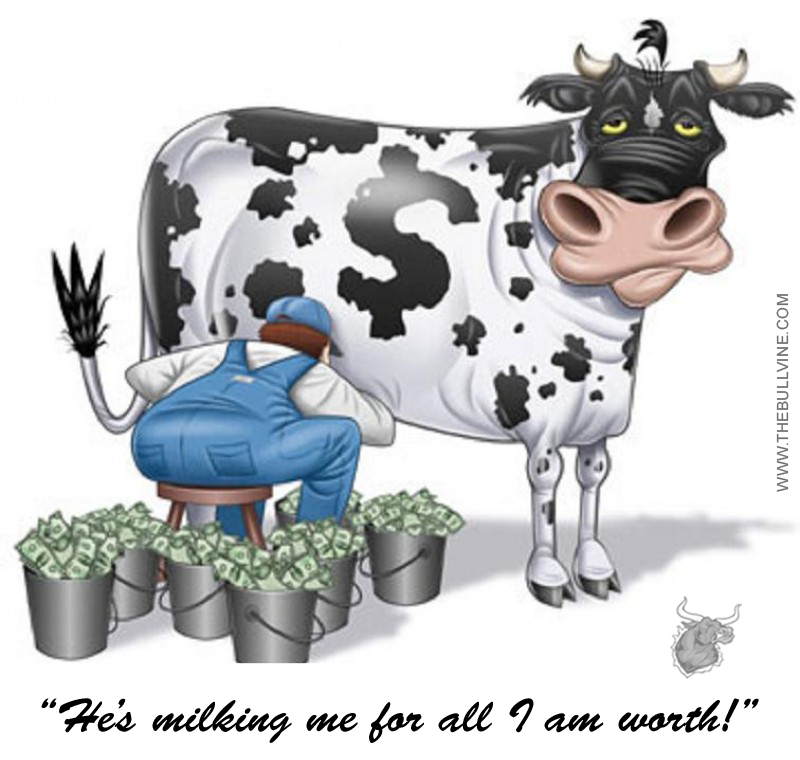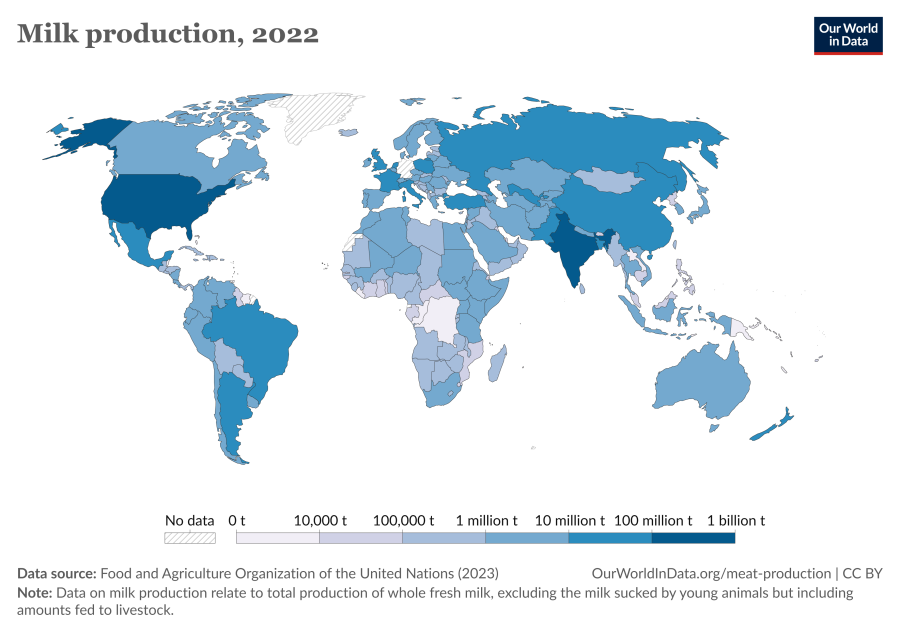Will Trump’s deportation plan devastate your dairy farm? Can you survive losing half the workforce? Find out now.
Summary: Imagine waking up to find half of your workforce gone overnight. That’s the reality if former President Trump’s deportation plan happens. In states like Wisconsin, where 70% of dairy farm labor comes from undocumented workers, this could spell disaster. The University of Wisconsin found that 10,000 illegal laborers provide 70% of labor on the state’s dairy farms. In California, over 75% of farmworkers are unauthorized. Removing them would ripple across industries, not just affecting farms. The entire GDP could take a hit; a University of Colorado study suggests mass deportations could eliminate 88,000 jobs. Around 50% of U.S. farmworkers are illegal immigrants. Their deportation is fewer workers and a cascade effect that could collapse entire industries.
- 70% of Wisconsin’s dairy farm labor is performed by undocumented workers, highlighting their critical role in the industry.
- Trump’s deportation plan could remove 45% of all agricultural workers in the U.S., leading to potentially catastrophic consequences.
- California, responsible for a significant portion of U.S. agriculture, employs over 75% of undocumented farmworkers.
- An immediate drop in the workforce could result in a 3-6% decline in the U.S. economy, with agriculture being hit the hardest.
- According to a University of Colorado study, an estimated 88,000 jobs could be lost if mass deportations occur.
- The ripple effect of deportations could disrupt farming and industries interconnected with agriculture.
- Deporting undocumented workers would not only lead to labor shortages but also increased costs and potential economic decline.

Imagine waking up one morning to discover that half of your workers had disappeared overnight. This is the harsh reality that many dairy farmers, including you, might face under Trump’s deportation proposal. Undocumented workers are not just a gear in the wheel; they are the foundation of the American dairy sector. With over 10,000 illegal laborers working on dairy farms in Wisconsin alone, accounting for more than 70% of labor, the vulnerability of the American dairy farming industry is stark. This is not just a statistic; your livelihood and the future of American dairy farming are in jeopardy.
Is Trump’s Deportation Plan About to Shatter the Backbone of American Dairy Farming?
Trump’s deportation proposal, portrayed as a way to safeguard American employment, notably targets undocumented migrants, who make up a sizable component of the agricultural workforce. These laborers, many of whom are undocumented, play an essential part in the everyday operations of farms and ranches around the United States. The idea is to deport illegal immigrants from the nation in the hopes of freeing up employment for American residents. However, there are alternative solutions, such as comprehensive immigration reform, that could address the issue without causing such a drastic disruption to the agricultural sector.
However, the present situation of the agricultural workforce reveals a different picture. According to the National Milk Producers Federation, around 50% of farmworkers in the United States are illegal immigrants. These people contribute directly to the nation’s food supply by doing vital jobs such as planting and harvesting crops, milking cows, and repairing equipment. Their substantial presence demonstrates the farm sector’s dependence on this underappreciated yet vital labor.
Let’s Talk Specifics
Let’s get specific. For dairy farmers in Wisconsin, Trump’s deportation proposal is not just a legislative move; it’s a potential economic disaster. The University of Wisconsin investigation reveals some alarming statistics: more than 10,000 illegal laborers provide 70% of labor on the state’s dairy farms. Imagine losing more than two-thirds of your workers overnight. The consequences would be catastrophic for your business and your community, potentially leading to economic downturns and rising costs.
This labor reliance is not limited to Wisconsin. California, another agricultural powerhouse, might see a similar disaster. With over 75% of its farmworkers unauthorized, widespread deportation may destroy the dairy and vegetable sectors, resulting in bare shelves and soaring prices nationally.
Furthermore, foreign-born workers contribute to the effective production of dairy products, guaranteeing that four out of every five liters of milk are provided consistently throughout the year. The consequences of losing such a vital workforce cannot be understated. It’s about more than simply filling employment; it’s about preserving the core of American agriculture.
California’s Agricultural Sector: The Heartbeat of America’s Food System at Risk
California’s agriculture industry is at the core of the United States food system. This state accounts for around one-third to one-half of the total U.S. agriculture output, making it an essential participant in feeding the country and even sections of the globe. With such an important function, any disturbance may shake the agricultural landscape.
The fact is stark: about 75% of California farmworkers are illegal. These individuals are critical to consistently ensuring fresh fruit reaches tables nationwide. These illegal laborers pick a wide range of produce, from the leafy greens in your local grocery store to the citrus fruits that make up your morning juice. If Trump’s deportation proposal were to be implemented, the immediate consequences for California would be disastrous. The state’s substantial fresh garden and orchard would come to a standstill. The ripple effects would not stop at the farm. Still, they would spread throughout the supply chain, affecting distributors, retailers, and consumers.
It’s not just a local problem but a national disaster. California’s agricultural production is too significant to ignore. Food production would suffer dramatically if this workforce suddenly vanishes, leading to rising costs and empty grocery shelves. Without these illegal laborers, California’s—and, by extension, America’s—food production would suffer greatly, potentially leading to a rise in food prices that would directly impact consumers.
The Historical Context: Migrant Labor as the Backbone of U.S. Agriculture
The dependence on migrant labor in U.S. agriculture is not new; it extends back to the early twentieth century. The Bracero Program, which began during World War II, saw the U.S. government welcome millions of Mexican immigrants to cover the labor vacuum caused by American troops. These laborers played critical roles in agricultural planting and harvesting, establishing the framework for a labor dynamic that continues today. The Bracero Program was a significant chapter in the history of U.S. agriculture, as it demonstrated the industry’s reliance on migrant labor and the potential consequences of disrupting this labor supply.
Since then, the agricultural industry has become more reliant on migrant labor for various reasons. The job is often seasonal, exhausting, and low-paying, making it unappealing to native-born American workers. The U.S. Department of Labor reports that over 50% of farmworkers in the country are illegal, highlighting the industry’s reliance on these workers.
Furthermore, the cost constraints on the agriculture business contribute to this reliance. Farmers work on tight margins and sometimes need help to afford to pay more excellent salaries, which would attract legal residents and citizens. Undocumented immigrants, prepared to work for lower wages, have become critical to maintaining viable farms. Understanding this historical backdrop is essential for understanding why any changes to immigration rules, such as mass deportations, would have far-reaching consequences for the U.S. agriculture industry.
Why Deporting Farmworkers is a Recipe for a National Economic Catastrophe
Deporting a large percentage of the agricultural workforce is more than simply a rural issue; it is a national economic catastrophe waiting to happen. A detailed study by a University of Colorado professor found that removing 1 million immigrants from the workforce would result in losing 88,000 jobs. This is more than simply having fewer workers to milk cows or pick vegetables; it’s a cascade effect that may collapse whole industries.
According to economic analysis, such a deportation strategy would negatively impact GDP and increase inflation. Why? The Amnegatively impactor is stagnant. It’s a complicated situation. The American workforce’s skilled labor is removed; skilled people often have to step down to fill the vacancies, which causes project delays and raises expenses.
Furthermore, a significant decline in the working force may reduce agricultural productivity. This implies increased food costs for consumers and a hit to sectors that depend on low-cost agricultural raw resources. Moreover, reducing agricultural productivity could lead to increased pressure on natural resources, such as water and land, and could lead to environmental degradation. According to the Congressional Budget Office, the U.S. workforce is predicted to expand by 5.2 million individuals and contribute $7 trillion to the economy, mainly owing to net immigration. Disrupting this growth trajectory might result in long-term economic stagnation.
Understanding the Ripple Effects in the Labor Market is Crucial
Understanding the ripple effects in the job market is critical. Deporting illegal workers does more than merely fill vacancies; it creates a difficult-to-fill vacuum. Unskilled labor, which often comprises basic construction or manual agricultural work, allows skilled workers to concentrate on more specialized tasks. Consider a professional carpenter or machine operator filling in for a missing unskilled worker. This shift causes delays, stall segments of construction or manufacturing lines, and a general decrease in output.
Furthermore, the cascading impact does not end there. Industries that rely on these interrelated employment also suffer. If a dairy farmer loses personnel, the tightening of the supply chain directly influences milk distribution, hurting both small retailers and larger food companies. Grocery costs may suddenly increase, while quality suffers due to hurried or compromised manufacturing methods.
Finally, the disruption of this integrated labor market hurts both individuals and the economy as a whole. It’s a domino effect: each missing component undermines the broader framework, jeopardizing employment and economic stability across numerous sectors, and eliminating unskilled labor tears the thread that holds the American workforce together.
Global Lessons on Managing Agricultural Labor: What Can the U.S. Learn?
To offer a broader perspective, consider how other nations have addressed comparable agricultural labor difficulties and what lessons the United States may learn from them.
Take, for example, Germany. Germany depends heavily on seasonal laborers from Eastern Europe to gather asparagus. When COVID-19 limits threatened to prevent the flow of these workers, the German government promptly acted. They established special charter planes to transport necessary personnel into the nation, ensuring that the agriculture industry remained operational. Germany’s strategy emphasizes the need for efficient and responsive immigration rules to help essential businesses.
Canada provides another example with its Temporary Foreign Worker Program (TFWP). This program recruits thousands of seasonal agricultural laborers from Mexico and the Caribbean. By formalizing the process, Canada secures a dependable agricultural labor force and safeguards workers’ rights. The focus is on balancing between addressing labor demands and protecting employee welfare.
The Seasonal Worker Programme in Australia permits Pacific Islanders to cover agricultural labor shortages. This scheme benefits Australian farmers while contributing to Pacific countries’ economic growth. Furthermore, Australia provides avenues to permanent residence for individuals willing to work in rural agricultural areas, making it a popular choice for many.
Looking at these foreign examples, it’s evident that tackling agricultural labor shortages requires a combination of flexible immigration rules, worker protections, and strategic planning. Implementing comparable initiatives might help the United States sustain agricultural output while protecting the interests of farmers and workers.
The Bottom Line
The new deportation approach weakens the backbone of the American dairy sector, as illegal immigrants account for 70% of labor on Wisconsin dairy farms and contribute heavily to California agriculture. The repercussions are clear: workforce shortages, economic downturns, and rising costs. Losing 950,000 farmworkers may change farms and the overall food production ecosystem, causing inflation and job losses across sectors. Supporting the present workforce is critical to the security and profitability of the U.S. national economy.













